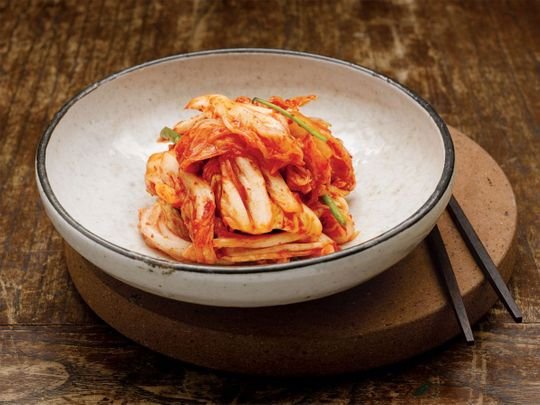Kimchi is a staple of Korean cuisine, celebrated for its bold flavors, tangy taste, and numerous health benefits. This traditional fermented dish is made from salted and seasoned vegetables, most commonly Napa cabbage and Korean radishes, which are then left to ferment, resulting in a complex and delicious flavor profile. In this recipe, we’ll explore how to make your own homemade kimchi that will rival even the best found in Korean markets.
Ingredients:
- 1 large Napa cabbage
- 1/4 cup sea salt
- 4 cups water
- 1 tablespoon grated ginger
- 4 cloves garlic, minced
- 2 tablespoons Korean red pepper flakes (gochugaru)
- 2 tablespoons fish sauce
- 1 tablespoon sugar
- 4 green onions, chopped
- 1 medium carrot, julienned
Instructions:
- Remove any wilted outer leaves from the Napa cabbage, then cut it into quarters lengthwise. Remove the core and slice each quarter crosswise into bite-sized pieces.
- In a large bowl, dissolve the sea salt in the water to create a brine. Submerge the cabbage pieces in the brine, making sure they are fully covered. Let them soak for at least 2 hours, flipping them halfway through.
- While the cabbage is soaking, prepare the seasoning paste. In a small bowl, combine the grated ginger, minced garlic, Korean red pepper flakes, fish sauce, and sugar. Mix well to form a smooth paste.
- After the cabbage has soaked, rinse it thoroughly under cold water to remove excess salt. Drain well and gently squeeze out any excess moisture.
- In a large mixing bowl, combine the cabbage, green onions, and julienned carrot. Add the seasoning paste and toss everything together until the vegetables are evenly coated.
- Pack the seasoned vegetables tightly into clean glass jars, pressing down firmly to remove any air bubbles. Leave about an inch of space at the top of each jar.
- Seal the jars tightly and let them ferment at room temperature for 1-5 days, depending on your preference for taste and texture. Check the kimchi daily and press down on the vegetables to ensure they remain submerged in the brine.
- Once the kimchi has reached your desired level of fermentation, transfer the jars to the refrigerator to slow down the fermentation process. The kimchi will continue to develop flavor over time and can be stored in the refrigerator for several months.
- Enjoy your homemade kimchi as a side dish, topping, or ingredient in various Korean dishes!
Conclusion
Homemade kimchi is not only delicious but also a fantastic way to incorporate probiotics and fermented foods into your diet, promoting gut health and digestion. By following this simple recipe, you can experience the tangy, spicy, and deeply satisfying flavors of traditional Korean kimchi right in your own kitchen. So gather your ingredients, roll up your sleeves, and embark on a culinary journey to Korea with this delightful fermented delight!

